Victory Motorcycles, an iconic name in the world of American-made motorcycles, was established in 1997 as a wholly-owned subsidiary of Polaris Industries.
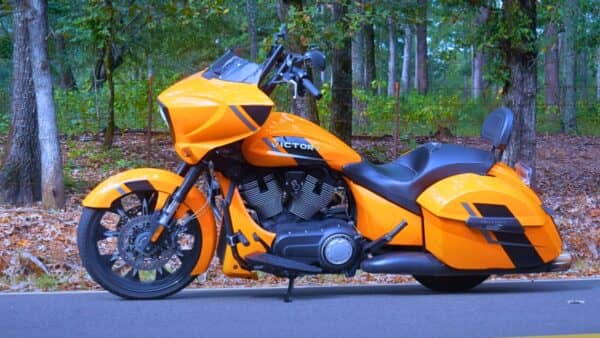
Born out of a desire to compete with heavyweight Harley Davidson, Victory Motorcycles quickly gained recognition for its powerful V-Twin engines and distinctively designed custom cruisers, classic baggers, and luxury touring bikes.
The brand’s headquarters were based in Spirit Lake, Iowa, United States, and it began selling its vehicles in 1998.
Over the years, Victory earned a reputation for innovation and quality, even venturing into the realm of electric motorcycles.
Models such as the 2010 Victory Cross Country™ became popular among motorcycle enthusiasts for their performance and design, affirming the brand’s place in the industry.
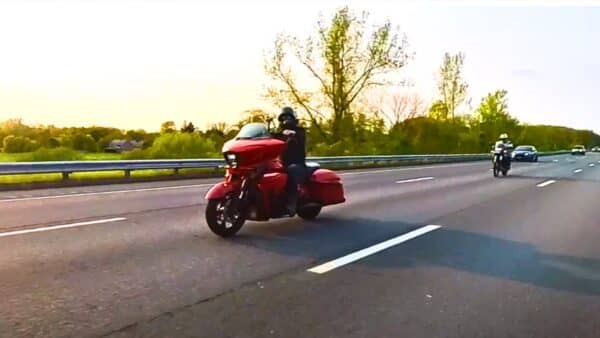
Despite the brand winding down production, the legacy of Victory Motorcycles lives on. Today, new and used Victory motorcycles remain sought after by riders and are available through various outlets, including Cycle Trader.
The brand’s website is still active, providing information about its range of models, further testament to the enduring appeal of Victory Motorcycles.
Have you pondered what led to its sudden silence, and questioned whether the echoes of its powerful V-Twin engines have truly faded away?
Or perhaps you’re curious if the spirit of Victory Motorcycles still lives on, even though its production lines have fallen quiet?
If these questions have piqued your curiosity, then you’re not alone. Many motorcycle enthusiasts share your intrigue about what led to the rise, fall, and enduring legacy of this once-prominent motorcycle brand.
So, let’s journey together into the heart of this fascinating story and uncover the truth about what happened to Victory Motorcycles.
Is Victory Motorcycles Still in Business?
Victory Motorcycles, as a manufacturer of new motorcycles, is not in business.
The brand ceased production in 2017 when Polaris Industries, the parent company, decided to focus on the more popular Indian Motorcycle brand.
Polaris continues to support existing Victory owners by supplying parts until 2027, and the brand remains alive in the hearts of its loyal fan base.
Although new Victory bikes are no longer produced, the community, aftermarket support, and availability of parts keep the spirit of Victory Motorcycles very much alive.
The Birth of Victory Motorcycles
The idea for Victory Motorcycles first emerged in 1994 within the walls of Polaris Industries, a company renowned for its power sports products.
The brand was officially launched three years later, in 1997, in Spirit Lake, Iowa, U.S., under the stewardship of Polaris Inc.
This marked the beginning of a new era in American motorcycling, with Victory set to become “The New American Motorcycle”.
The mission was clear: to build innovative and stylish heavyweight motorcycles that would capture riders’ hearts across the nation.
In 1998, Victory Motorcycles debuted its first model, the V92C. Assembled entirely in the United States, the V92C was a testament to Victory’s commitment to quality, innovation, and American craftsmanship.
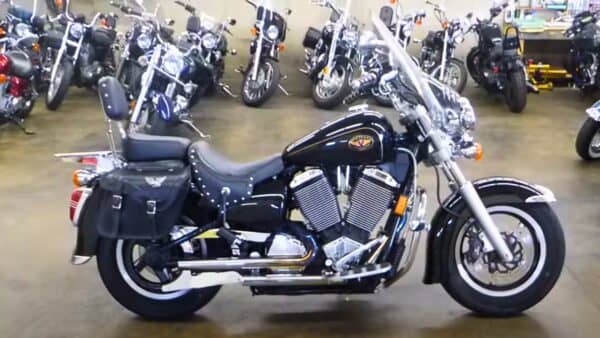
The 92 cubic inch V-twin engine was a key feature of this model, setting the tone for the powerful performance and distinct design that would become Victory’s trademark.
The period between 2001 and 2002 marked a significant milestone for the brand with the development and start of production of a new generation of power units called “Freedom“.
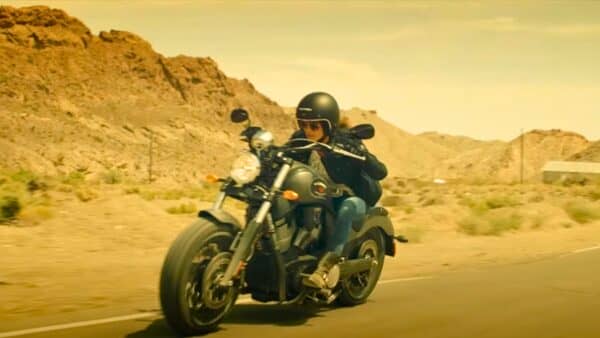
These engines embodied the power, reliability, and freedom of expression that Victory sought to offer its riders.
From its inception, Victory Motorcycles was driven by a passion for innovation and a desire to offer motorcycle enthusiasts a fresh, unique choice in the marketplace.
The Golden Years of Victory Motorcycles
In the annals of American motorcycling, certain periods stand out for their sheer brilliance, innovation, and dynamism.
For Victory Motorcycles, the golden era arguably began in 2007 and peaked in 2012, a period during which the brand truly hit its stride, achieving remarkable success and leaving an indelible mark on the industry.
During these years, Victory Motorcycles expanded its lineup, offering riders a diverse range of cruisers, baggers, and touring models.
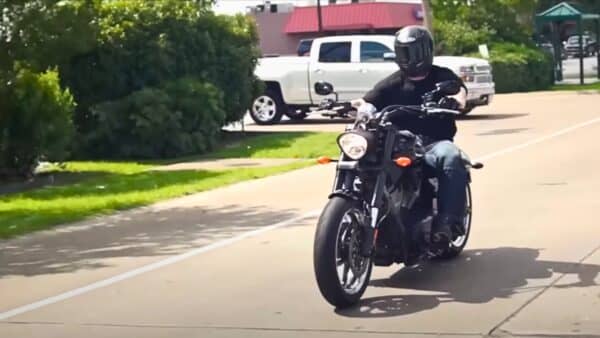
One such model was the Victory Hammer S, launched in 2007. Hailed as one of the showiest performance cruisers on the market, the Hammer S was notable for its sporty demeanour, robust powertrain, and distinctive design, which included a 250mm rear tire – the widest ever fitted on a production cruiser.
Another standout model during this golden period was the Victory Kingpin. As a testament to the golden era of American cruisers, the Kingpin combined traditional styling with modern technology, offering riders a unique blend of comfort, performance, and style.
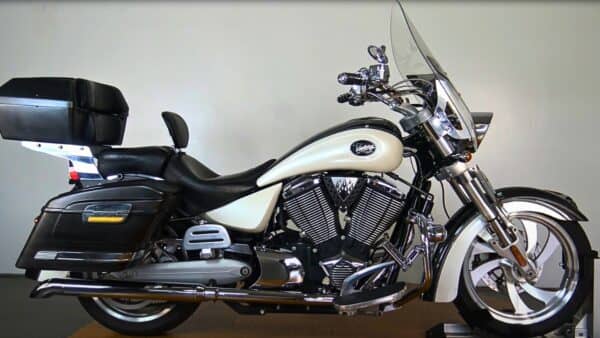
2012 marked the zenith of Victory’s success, with the company selling more than 10,000-15,000 motorcycles in a single year.
This record-breaking achievement underscored the brand’s growing popularity among riders and its ability to compete with established players in the industry.
But perhaps the most significant milestone during this period was the introduction of the 15th Anniversary Cross Country Tour Limited Edition in 2014.
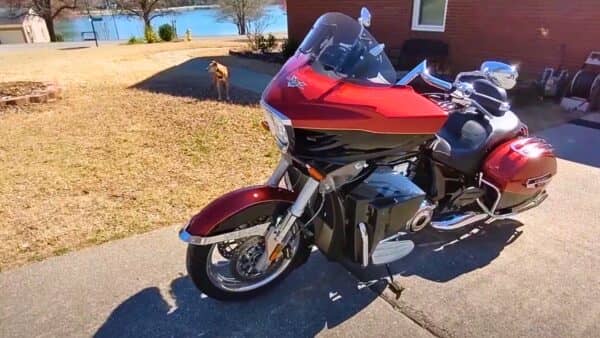
As a culmination of 15 years of growth and evolution, this model showcased the best of what Victory had to offer – a robust V-twin engine, comfortable riding position, ample storage, and distinctive styling.
The Challenges Faced
Victory Motorcycles, despite its remarkable achievements and iconic status, was not without its challenges.
From market competition and economic factors to internal issues, the brand faced numerous obstacles on its journey.
One of the significant hurdles for Victory Motorcycles was intense competition in the American motorcycle market.
Harley-Davidson, a well-established and beloved brand, dominated the landscape, making it difficult for newcomers like Victory to carve out a substantial market share.
Furthermore, competition from Japanese manufacturers, who offered reliable motorcycles at competitive prices, added to Victory’s woes.
Economic factors also played a role in the challenges Victory faced. The 2008 financial crisis hit the motorcycle industry hard, leading to a significant contraction in sales.
Despite this, Victory managed to weather the storm, but the economic downturn undoubtedly had an impact on the company’s growth trajectory.
Internally, Victory Motorcycles grappled with several issues. For instance, some customers reported problems with their bikes, such as loud clicking noises when standing the bike up or straightening the bars.
Certain models were recalled due to manufacturing errors that posed a risk of engine seizure.
Another noteworthy challenge was the brand’s struggle with resale values.
According to a discussion thread on TheVOG.net, the loss of value for a Victory motorcycle could be anywhere from a third to half within two model years, depending on the model.
This issue likely deterred potential buyers who saw purchasing a motorcycle as an investment.
Some discussions on forums such as r/cruisers and GL1800Riders.com suggested that Victory motorcycles were on par with Honda in terms of reliability and that parts availability would not be a problem in the foreseeable future.
The Ceasing of Production
In an industry that often celebrates longevity and tradition, the decision by Polaris Industries to cease the production of Victory Motorcycles in 2017 came as a significant surprise.
This decision marked the end of a brand that had been present for nearly two decades in the American motorcycle landscape.
Polaris Industries, the parent company of Victory Motorcycles, announced the cessation of Victory’s operations due to multiple factors.
One of the primary reasons cited was the brand’s struggle to establish a profitable market position.
Despite producing innovative and powerful motorcycles, Victory found it challenging to secure a substantial market share in the face of stiff competition from established brands like Harley-Davidson and Japanese manufacturers.
Another contributing factor was the acquisition of the iconic Indian Motorcycle brand by Polaris in 2011.
The Indian brand, with its rich history and strong following, offered a more profitable avenue for Polaris to focus its resources and efforts.
Finally, underlying economic conditions and internal issues, such as manufacturing errors leading to recalls and reported customer problems, also played a part in the decision.
The Aftermath and Legacy
When Polaris Industries announced the closure of Victory Motorcycles in 2017, it sent ripples through the motorcycle industry.
So, what was the impact of this closure on the industry, customers, and the parent company?
For the industry, Victory’s closure represented the loss of an innovative player that challenged the status quo.
Victory Motorcycles had carved a niche for itself as a maker of high-quality, American-made motorcycles that combined traditional styling with modern technology.
The brand’s departure left a vacuum in the market, particularly within the segment of riders who sought an American alternative to Harley-Davidson.
For customers, the initial reaction was one of disappointment and concern. However, Polaris reassured owners by committing to supply parts for its models and providing service and warranty coverage.
Despite the cessation of production, there continues to be a vibrant market for used Victory motorcycles, and parts availability has not been a major issue, as evidenced by discussions on platforms like Reddit.
The Current Landscape for Victory Owners
Victory Motorcycle owners might have been concerned about the brand’s cessation of production in 2017.
However, it’s clear that the future still holds promise for these motorcycle enthusiasts.
Parts Availability
Despite ceasing production, Polaris Industries committed to supplying parts for its models.
This promise has been upheld, with a plethora of online stores offering a vast selection of both OEM (Original Equipment Manufacturer) and aftermarket parts for various Victory models, including the Vision, Hammer, Kingpin, Jackpot, and Ness Signature series.
Websites such as VictoryParts.net and VictoryOnly.com offer one of the largest inventories of Genuine Victory OEM parts.
Similarly, BuyWitchDoctors.com provides in-stock genuine OEM parts at competitive prices, with free shipping on U.S. orders over $159.99.
RevZilla also offers a wide range of aftermarket parts and accessories for Victory Motorcycles.
Servicing
In terms of servicing, Victory owners can rest assured. Polaris committed to providing service and warranty coverage for a period after the closure.
Many independent motorcycle repair shops have mechanics familiar with the Victory brand, ensuring that servicing and maintenance needs can be met.
Community Support
The community support for Victory owners remains strong. Online forums and social media groups provide platforms for owners to share experiences, advice, and camaraderie.
These communities play a crucial role in keeping the Victory spirit alive, offering technical support, organizing rides, and even hosting events.
Sources: Wikipedia | Motorbike Mike | Forbs | Quora

Ahtsham Younas is a passionate blogger and content writer. He loves to ride motorcycles and learn the mechanical process behind the motorcycles.
He has been writing articles in the motorcycle industry since 2019 and has learned many things about motorbike niches.


